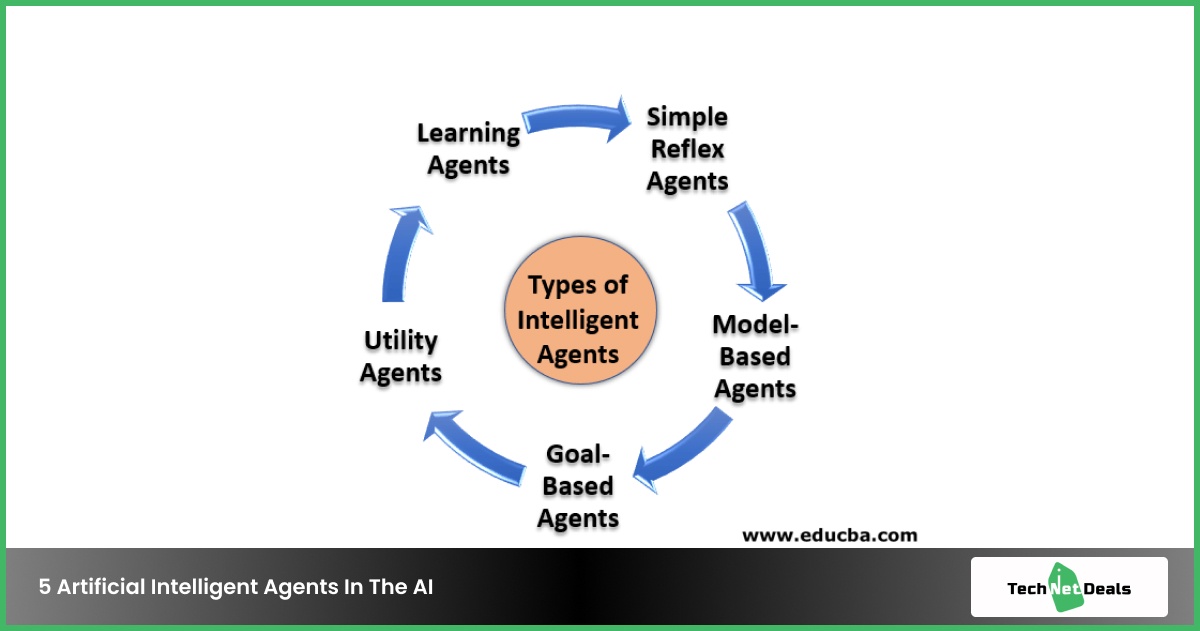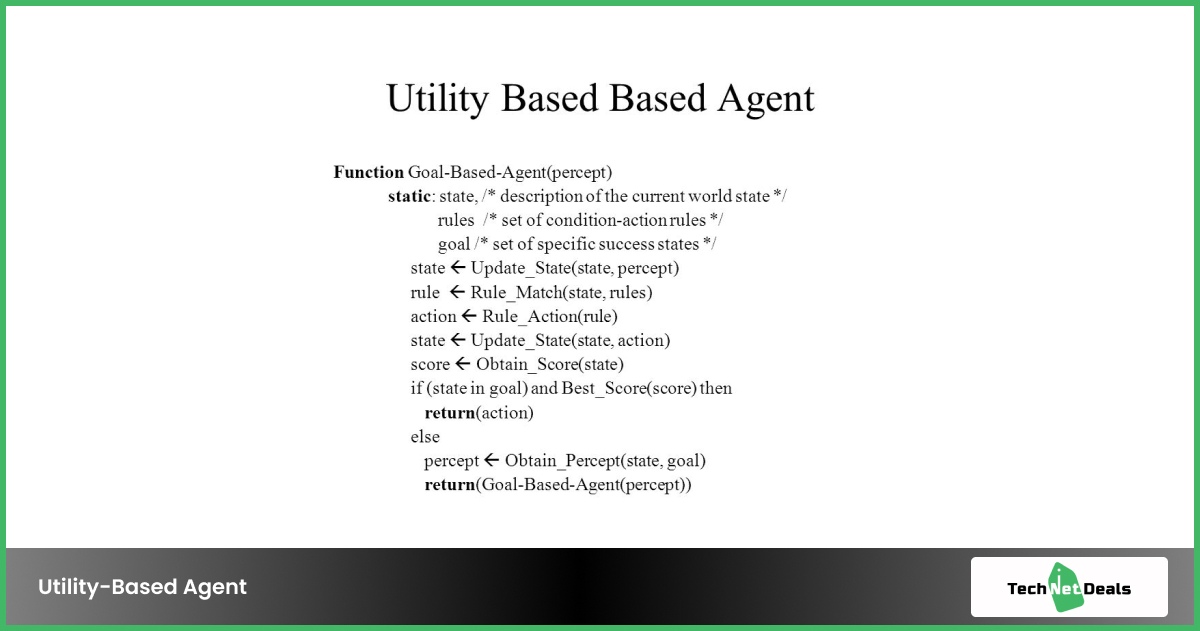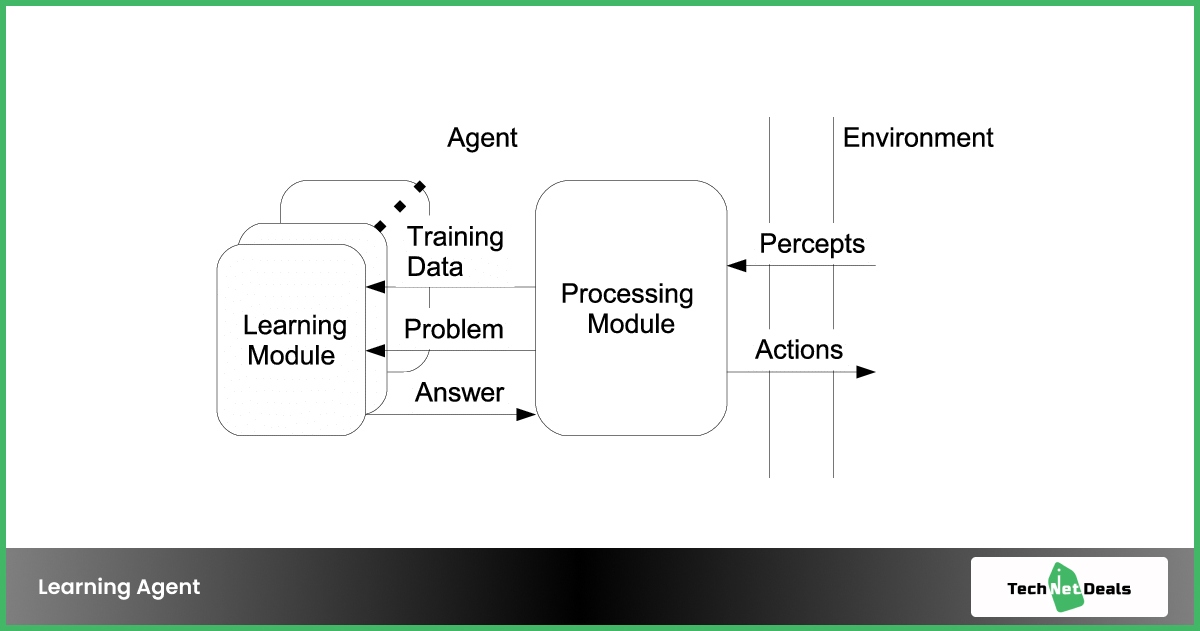
How many types of agents are there in artificial intelligence?
- 2
- 3
- 4
- 5
Answer: 5
Description
The agents of artificial intelligence are intelligent agents. These agents are simple programs that can make the decision or perform a specific service based on the particular environment.
These programs are used to gather information based on the regular program. The program is scheduled based on the requirements of the users. These are the simple definitions of the artificial intelligent agent.
Now you know the answer for how many types of agents are there in artificial intelligence. For a better understanding of the functionality of the agents, you have to understand the functions of the different agents and how you can use them in the AI.
So let’s see the five different types of agents which are present in artificial intelligence.
5 Artificial Intelligent Agents In The AI

The artificial agents are grouped into five different classes. The perceived intelligence degrees are different among these five classes. All of these agents can improve the performances and produce a better result over time.
Here is the list of five different artificial intelligent agents from AI. After reading to the end, the question regarding how many types of agents are there in artificial intelligence is going to be much clearer.
1. Simple Reflex Agent

The functions of the simple reflex agent are simple, as its name. These agents are taking the decisions on the basis of the present perspectives. And it ignores the rest of the reflex agent history. Therefore, the performances and the work process are very simple, but rectification is almost impossible. So you can easily say the simple reflex agent is the dumbest AI among all five options.
Features Of Simple Reflex Agent:
- These reflex agents are only workable in an observable environment.
- Simple reflex agents work on condition action rule.
- A very minimum kind of intelligence is available in the agent.
- Simple reflex agents can not adapt to the changes in the environment.
2. Goal-Based Agent

The knowledge of the present state and environment is always required to determine the goals. Through the current state environments and goals, these AI agents are performing. You know, five is the answer for how many types of agents are there in artificial intelligence. But among all the agent’s goal-based agents’ performances are very simple. Only you have to know the goal which the users want.
Features Of Goal-Based Agent:
- The goal-based agent is a proactive agent.
- This AI agent only has to know the desired goal or the outcome.
- The goal-based agents only have to know the model’s goals information.
- Only the user has to select an action and the goal information for the agents.
- These types of agents have a long sequence of output probabilities.
- Goal-based agents are analysing the different searches and planning to perform the most smartly.
3. Model-based Reflex Agent

The model-based agents work in an observable environment. As the reflex agent is working on the basis of the specific models, the world’s ideas are the main thing. This means you have to insert a specific model. Model-based reflex agents are the goal-based agents that are co-dependent. For developing a new model of the model-based reflex agent, you have finalized your goal.
Features Of Model-Based Reflex Agent:
- The model-based reflex agents are partially dependent on the observable environment.
- These agents can track down the situations then make the decisions.
- It works on the basis of the current state representations from the percept history.
- If you like to update the agent process, you must insert one new model and the required output. With this, you also have to redesign the model.
4. Utility-Based Agent

Utility-based agents are similar to goal-based agents. This type of agent provides an extra component through the utility measurement. For executing the utility-based agent, you will also require a specific goal and target. The utility-based agent’s functions and the goals and possible alternative outcomes are also required.
Features Of Utility Based Agent:
- For the utility-based agent’s functions along with the goal, alternative possibilities are also required.
- These agents are working based on two factors: one alternative option and the other one is the goal.
- The agent is selecting the specific actions, which is the best possible way to get the result.
- The utility functions are eligible to count the actual state of the real number to check the efficiency of the action.
5. Learning Agent

Learning agents are the smarties among all five agents. You do not have to determine the goal and the objectives. It has its own; learning potential. So the learning agents are learning from past mistakes and executing the operation. The learning agents have their own automatic learning function.
Features Of Learning Agent:
- The learning agent is starting with the basic knowledge and then adopts the different learning functions.
- The learning elements are making improvements by learning from the environment.
- Then Citic receives the feedback and runs based on a fixed performance standard.
- The performance elements are selecting the external actions.
- The problem generator of the learning agent is providing you with suggestions and supportive information.
- As this agent has learning potential, improvement is also possible.
Conclusion
This is the answer to the question of how many types of agents are there in artificial intelligence. All of these five agents are part of artificial intelligence agents. Each of the functions of the agents is different. If you have any types of questions regarding the solutions, then comment back to us and let us know.
Read Also:






